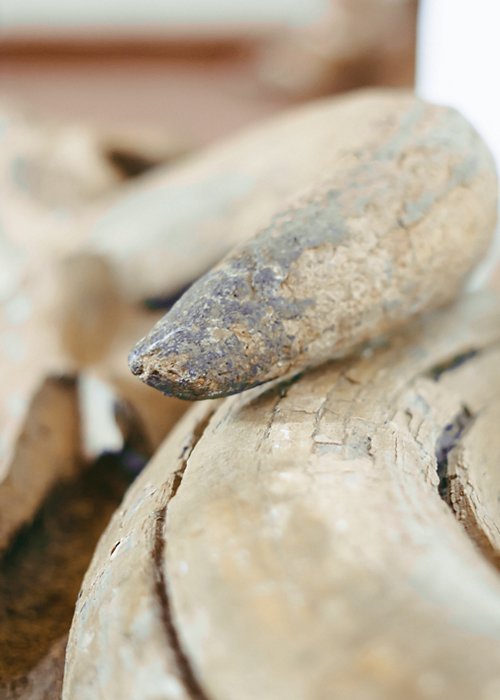An archaeological excavation at the site of Medzhibozh in western Ukraine has uncovered a set of artefacts made from mammoth ivory dating back 400,000 years. These extraordinary objects were found in a rock layer that predates the arrival of modern humans in Eurasia by a considerable margin. The lead researcher expressed surprise at the discovery of ivory artefacts from the Lower Palaeolithic, since such finds usually appear only from the Upper Palaeolithic, around 50,000 years ago, when new ivory-working techniques were developed. The astonishment was also due to the unusual nature of the objects themselves: they are extremely small and closely resemble stone artefacts. A detailed analysis of 24 tiny fragments of mammoth ivory, found alongside flint and quartz tools, revealed that 11 of the ivory pieces had been deliberately worked by ancient humans. Three of them had been shaped using a stone hammer and anvil, in the same way that stone flakes are crafted into tools, thus confirming that these are the oldest known intentionally modified ivory objects. The fragments are very small, and ivory of this size and consistency does not produce a durable edge, certainly not comparable to stone. As the study’s authors note, ivory typically has a hardness of two to four on the Mohs scale (used to measure material hardness), whereas flint and quartz score between seven and eight. This makes ivory a poor choice for toolmaking. Researchers therefore proposed other possible purposes for these ancient finds. One theory is technological: the site is located in an area with limited access to high-quality stone resources, so its inhabitants may have experimented with different rock-like materials for chipping. Ivory could have been one of these trial materials. However, given the objects’ unsuitability as tools, the study also suggests they may not have served a purely practical purpose. Instead, they might reflect imitative or playful behaviour, perhaps by children copying adults engaged in stone working. Alternatively, the ivory pieces could have been used in educational activities, with older members of a prehistoric community teaching youngsters the basics of stone chipping using ivory as a training material. Although the pieces are far too old to have been made by Homo sapiens, it is still unclear which archaic human species was responsible. Whoever crafted these ivory objects, their discovery adds a new dimension to the behavioural repertoire of early hominins. It suggests that even at this early stage, they may have engaged in activities that could be described as imitative or socially driven.




